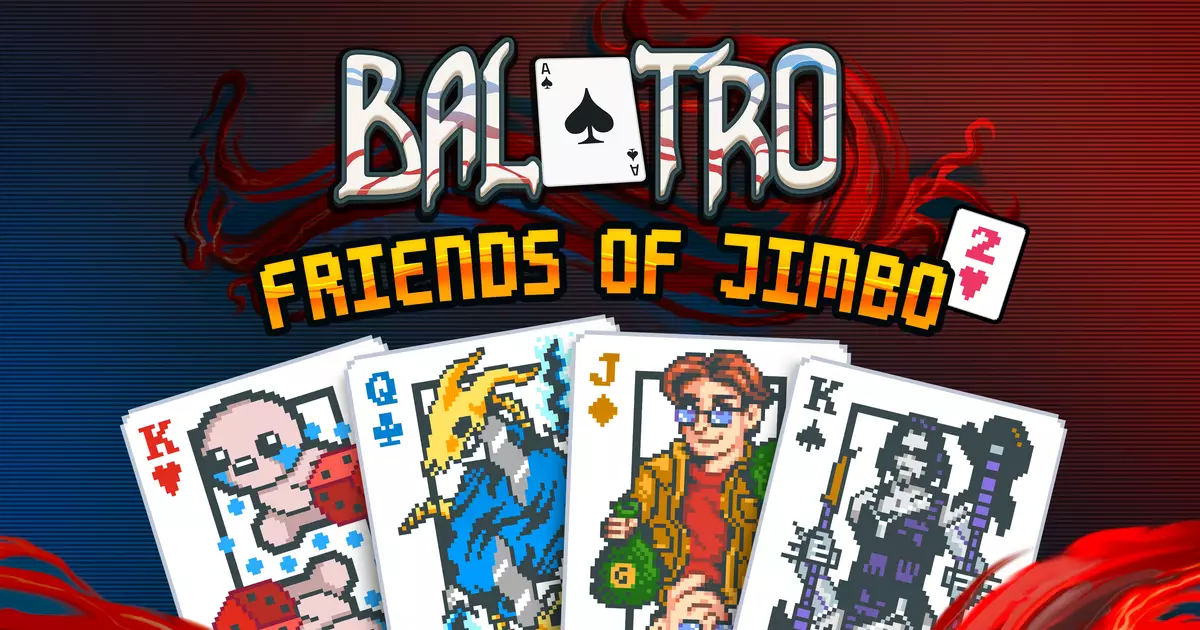My encounter with Balatro, a game that had recently taken the indie scene by storm, was marked by an hour of engaging gameplay that swiftly culminated in my decision to uninstall it. This brief experience left me questioning the allure of such games, particularly those that thrive on creating a deeply immersive yet ultimately ephemeral satisfaction. It begs the question: why do we continue to invite these experiences into our lives despite the traps they often conceal? Perhaps some may possess a resilience I lack, reveling in the thrill of chasing digital highs.
Despite my fleeting engagement, Balatro is evolving, as evidenced by its latest free update, which introduces a second set of themed card art. Drawing inspiration from popular titles like *Binding of Isaac*, *Cyberpunk 2077*, *Stardew Valley*, and *Slay the Spire*, these cosmetic changes may appeal to those seeking novelty without altering gameplay mechanics. The option to customize one’s deck through the new settings is commendable; however, such updates can sometimes serve more as a distraction than a remedy for the core issues that plague many games in this genre. For gamers fatigued by the grind of repetitive mechanics and hollow rewards, these new skins might be seen as window dressing on a fundamentally flawed product.
This isn’t the first time Balatro has attempted to entice players with aesthetic upgrades. The inaugural Friends of Jimbo update back in August featured card art related to well-known games like *The Witcher 3* and *Among Us*. While these nods to renowned franchises could foster nostalgia and perhaps draw in fans, the overarching effect still revolves around enhancing a gameplay experience that some may find lacking in depth. Though the allure of colorful art and familiar motifs can temporarily boost interest, they cannot obscure the potential shortcomings rooted in the game’s design.
Critical voices have emerged from within the gaming community regarding Balatro’s ability to captivate players over extended periods. According to esteemed reviews, such as Katharine’s from Rock, Paper, Shotgun, Balatro—while providing an exhilarating rush of learning and mastering numerically driven challenges—ultimately risks becoming another fleeting indulgence. The game’s appeal lies squarely in its capacity to thrill through chaotic yet rewarding gameplay, yet it is precisely this allure that generates skepticism among those who question its longevity. Is the thrill of conquering a system enough to forge a lasting connection, or will players inevitably become disenchanted?
As the positivity persists regarding Balatro’s magic, one must pose the critical question: will the titles that have garnered admiration in their moment remain engaging in the long term? I resonate with Katharine’s profound reflections on the joys of mastering Balatro’s intricacies, yet I remain a cautious observer, wary of the game’s ability to maintain interest beyond initial excitement. As Balatro continues to develop through updates, it seems destined to walk a fine line between creating a compelling experience and merely being an easily consumable trend. For those of us who have experienced the bittersweet cycle of uninstalling a game post-joy, the allure remains but with tempered expectations.

